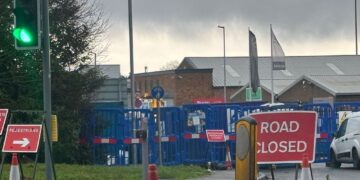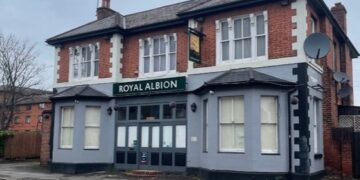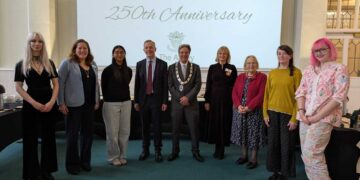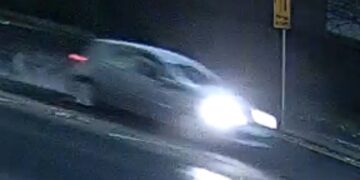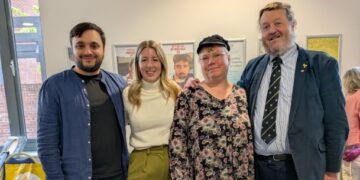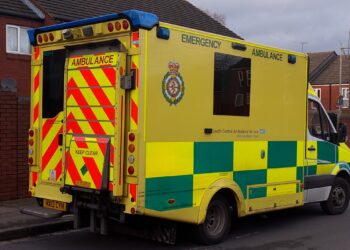THIS WEEK, Reading Borough Council is examining proposals as laid out in the Local Transport Strategy, which outlines its transport aims up until 2040.
The extensive plans include a number of proposed improvements to public transport, cycling routes, and pedestrian access, all aimed at cutting congestion and improving air quality.
The proposals have been under multiple public consultation periods since they were put forward in 2019, and will be discussed at a planning meeting due on Thursday, July 29.
As such, the proposals largely focus on promoting more environmentally-friendly and sustainable ways of improving traffic measures in Reading.
This includes improving access to electric vehicles for those who rely on cars for work.
There are also a number of projects aimed at linking key areas of Reading Borough through improved access for various transport options.
Among these are proposals for more bus lanes to further improve the efficiency of bus travel, and similar improvements to segregated cycle routes through the town.
There are also a number of proposals seeking to make more efficient use of existing highways, and mitigation of the problems caused by limited river crossings.
Cllr John Ennis, lead councillor for climate strategy and transport, said of the strategy meeting: “It will see an introduction to the plan.
“We’ll go through it and give opposition councillors a chance to have their views heard– transport effects everyone, so it’s important that we don’t want to make it party political.
“Much of it has been put together with experts over a long time–incidentally, we still believe in experts– to create a new vision for transport strategy in Reading.”
The plans broadly set out the council’s objectives leading up to 2040 in a 180-page document, which will see a further public consultation if agreed at the strategy meeting.
The meeting will also consider proposals which look at making the adoption of electric vehicles throughout the borough easier.
“While we’re not anti-car, we’re looking to increase the use of public transport.
“But we don’t want to punish drivers, we want to offer carrots rather than use sticks; it’s always a challenge to appeal to absolutely everybody’s views on traffic and transport.
“There have been some changes even since Covid; many areas traffic has seen reductions, but changes to peak times due to more people working from home, which we’ve incorporated into the plans.”
He also explained that the council understands the necessity for using a car in any number of circumstances.
“We’re not going to damn car users: you can’t get a ladder on the bus, you can’t take toolboxes on a bike, so people need cars to work and we have to reassure those who do that they will benefit from the plans too.”
This further re-iterates the council’s stance on a hypothetical congestion charge in Reading, which last week it explained was “off the table” for car users in Reading.
He also explained that this included a reduction in train usage numbers, as observed by the council.
“We want there to be the option to take the train; between the new Green Park, Winnersh, Earley, Tilehurst, and Reading West, we’re hoping we can make journeys more comfortable, faster, and easier.”
He admitted that cost is an issue which many commuters are finding increasingly unmanageable, however, which he said was “a real challenge.”
“We do need to be looking at that, so we’re trying to improve that is with a more unified public transport system.
“If we can achieve a unified ticket for buses and trains, we could make people’s journeys much easier by linking road and rail, which we feel is distinctly possible, but is still in its early stages.”
He also explained that recent government funding of £26 million had been awarded to the council with a view to further improving its bus services.
“They’re flexible, and they’re some of the best in the country, but we want to improve them even further.
“So we want to make them even more regular, and improve the access via bus lanes, all while keeping prices as cheap as possible.”
Cllr Ennis explained that there are limitations which the council is seeking to overcome, including the difficulties in getting traffic across the river in the north of town.
“We’ve been trying to get a third bridge and working together with Oxfordshire, which we’ve been trying for a long time.
“We’ve had a whole generation of people have really considered as one of the answers to congestion in Caversham.”If this is not successful, however, Cllr Ennis explained that the council would instead seek to target ‘external’ traffic, which does not start or stop in Reading, with charges.
“If you live or work in Reading, we won’t be charging, but people that come through Reading, using it as a bit of a rat run, then we could have a solution there.
“And consultations have been in accord with this.”
The Reading Transport Strategy 2040, as well as the draft proposals for EV infrastructure, are due to be discussed at the Strategic Environment, Planning, and Transport Committee meeting on Thursday, June 29.
An overview of recent changes to the full proposals is available via: democracy.reading.gov.uk
A full rundown of the 180-page proposals is available via: democracy.reading.gov.uk


